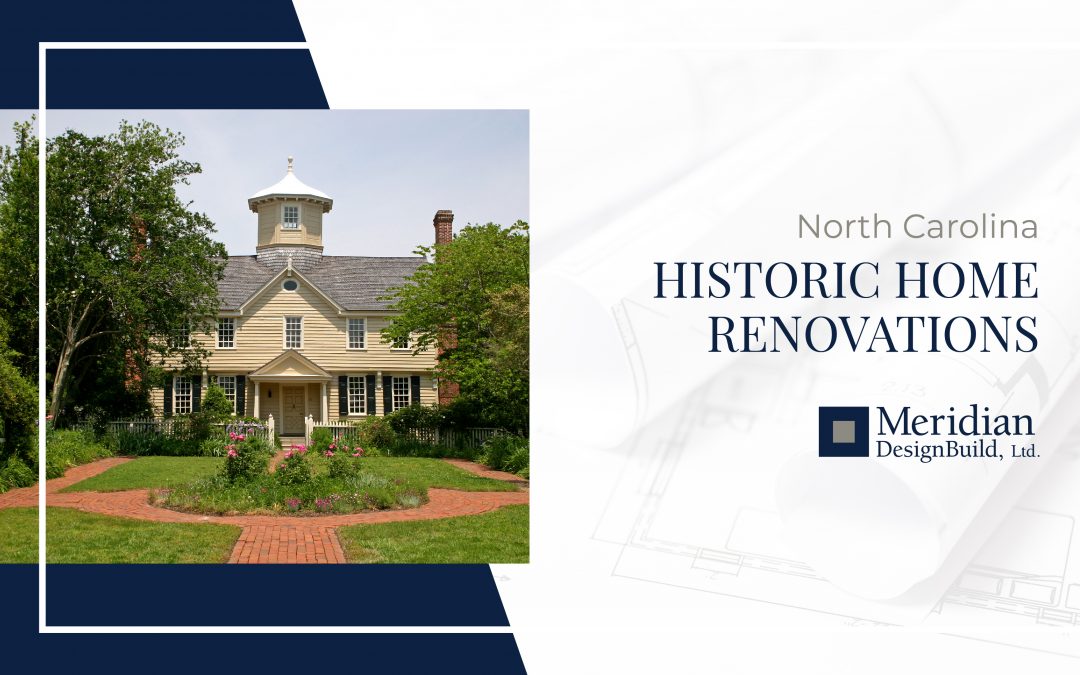Historic homes are more than just architectural masterpieces from a bygone era; they are a significant part of our cultural heritage. Renovating these treasures allows you to preserve your local area’s legacy while helping to improve the sustainability of our environment.
Importance of Preserving Historic Homes
What makes a home historic? Historic homes are those that hold significant architectural, cultural, or historical value. These could be homes that have stood for decades or even centuries, bearing witness to the evolution of architectural styles and societal norms.
The unique features of these homes, such as ornate cornices, high ceilings, or handcrafted woodwork, give them distinct characteristics that are worth preserving.
Yet preserving historic homes goes beyond aesthetic considerations. These structures serve as tangible links to our past, offering valuable insights into the cultural and historical milieu of different periods.
Renovation is an environmentally friendly option compared to building a new home. It conserves resources and reduces waste associated with demolition and new construction.
Steps to Renovating a Historic Home
Renovating a historic home is a meticulous process that involves three key steps:
Identification and Research
This entails understanding the structure’s historical value, identifying its original features, and researching its architectural style. Often this involves consulting historians or architectural experts.
Planning
Draft a renovation plan that respects the original design while incorporating modern functions and conveniences. Hiring professionals experienced in historic renovations is invaluable for projects like these.
Execution
Implementing the plan may involve unexpected issues such as outdated wiring or structural weaknesses. It’s important to preserve original features while updating necessary elements for safety, functionality, and current building codes.
Obstacles to Historic Home Renovation
Renovating historic homes comes with its set of challenges. Old materials may be difficult to replace. Structural issues may require creative solutions. There could be regulatory restrictions on what changes can be made to a heritage property.
Navigating these challenges requires patience and expertise but with proper planning and expert guidance, these hurdles can be overcome.
Benefits of Historic Building Renovation
Property owners find many advantages to investing in historic home renovation:
Preservation of History
Historic homes are a part of our shared heritage, and they tell the story of our past. By renovating these buildings, we can help to preserve that history for future generations.
Economic Benefits
Historic homes can boost local economies by attracting tourists and businesses. In addition, renovation projects can create jobs and stimulate economic activity.
Environmental Benefits
Historic homes are often made from durable materials that can last for centuries. By renovating these buildings, we can reduce the need for new construction, which can help to conserve natural resources.
Funding and Incentives for Historic Building Renovation
There are a number of ways that property owners can finance historic building renovations. Some of the most common methods include:
Historic Tax Credits
The federal government offers a tax credit of up to 20% of the cost of rehabilitating historic homes. This credit can be used to offset the cost of the renovation, making it more affordable for property owners.
State and Local Tax Credits
Many states and localities also offer tax credits for historic home renovations. These credits can vary in amount, so it is important to check with your local government to see what is available.
Grants
There are a number of grant programs available to help property owners finance historic home renovations. These grants can be funded by federal, state, or local governments and private foundations.
Conventional Loans
Conventional loans can also be used to finance historic home renovations. However, these loans may be more difficult to obtain than other types of financing, as lenders may be hesitant to lend money for projects that involve historic buildings.
Historic Loans
There are a number of specialized lenders that offer loans specifically for historic home renovations. These lenders are more familiar with the requirements for historic preservation, and they may be more willing to lend money for these types of projects.
The best way to finance a historic building renovation will vary depending on the specific project and the property owner’s financial situation. However, by exploring all of the available options, property owners can find a financing solution that meets their needs.
Historic Building Renovation with Meridian DesignBuild
At Meridian DesignBuild, Ltd. in Charlotte, North Carolina, we understand that renovating a historic home is more than just upgrading its features — it’s about honoring its story. Our team has experience in restoring various types of historic homes while integrating modern conveniences without compromising their original character.
If you’re considering renovating your historic home, we invite you to contact us at Meridian DesignBuild. Together, we can preserve the history and charm of your home through thoughtful renovation.
Contact us for a free phone consultation.


Recent Comments